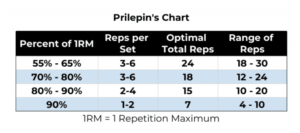Blog 37 – Fall Goals – Cont’d
Inevitably we’re going to come up with at least one goal that we’ll have no clue how to reach. While I could end this blog by saying, “ask your coach” – again – that’s not really why any one is here. So we’ll go down another road, perhaps the one less travelled… or whatever literary cliché you prefer. “What road is that?” you ask.
Well, sometimes “the hardest part, is deciding where to start.” (No, my friends, that’s not another Robert Frost reference it’s an Olive Garden commercial.) For example, I was having a hard time figuring out what to write this blog entry about. First, I assumed that many folks would come up with a strength-based goal so I was going to share all sorts of resources on different periodization methods and blah, blah, blah, but then remembered there is a such thing as too much information AND many of us really don’t give a shit about the technicalities of programming. So rather than write something that would likely only add to the confusion, anxiety, and likelihood of steering you farther away from your goal, I took inspiration from Kimmy and, yes, an Olive Garden commercial, and just started writing.
Now, is the blog perfect? Nope. Did it start off reading like a person wrote it with no clue about what they were going to say in the next sentence? Yep. Are there typos, poor grammar, and whatever other mistakes that could be made along the way? Sure are. But you know what else there is to this point? Most of a blog. And that’s really the goal here, write ( see what I did there?!?!?)? Sure it doesn’t look like I thought it would. Nor would I necessarily recommend writing a blog in the same way that I do. But it works for me.
And THAT, my friends, is ultimately the way that we will all accomplish our goals. By just starting. By exploring. By making time to dedicate yourself toward your craft, or pull-up, or conditioning, or whatever you’ve decided to work towards. When we create time for our intentions, it somewhat doesn’t matter how we spend it. I know some of you will inevitably be chirping that you can’t just think about doing a pull-up. In which case, you’re absolutely right, but that’s not what I’m trying to get across here. Yes, you have to do something in relation to the your goal in that time, but it doesn’t have to be perfect. It doesn’t have to look like your neighbor or the Instagram influencer or whatever. It just has to look like you working toward your goal.
Over time, with continuous effort, you’ll reach your goal… much in the same way that I’ve reached the end of this blog.
More confused? See how I could have ended the blog in the second sentence.
-D
